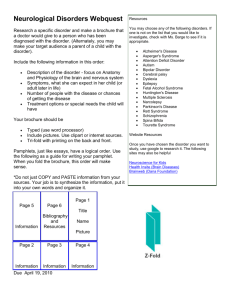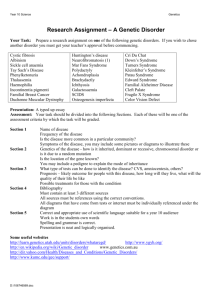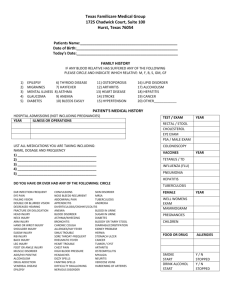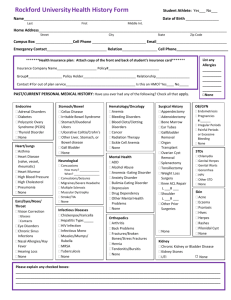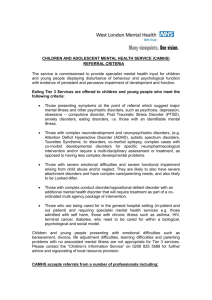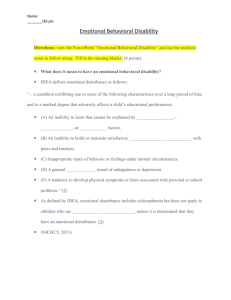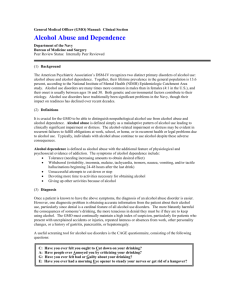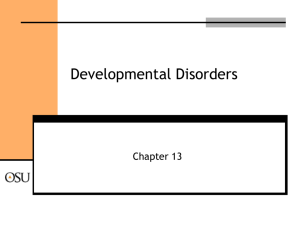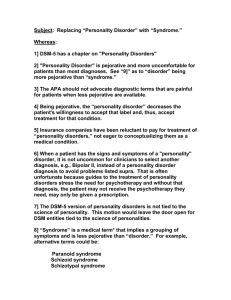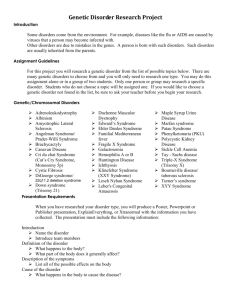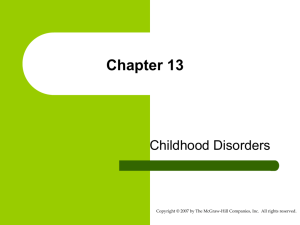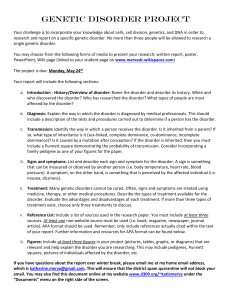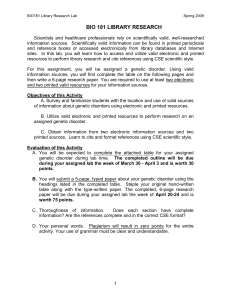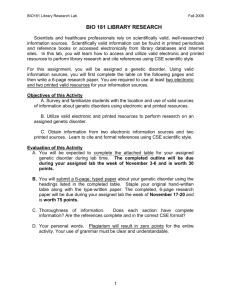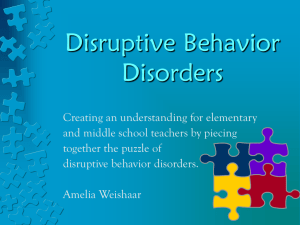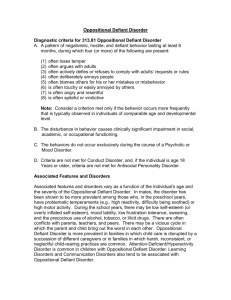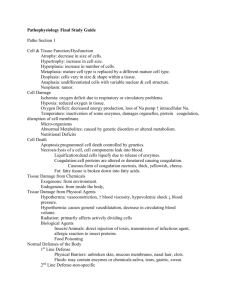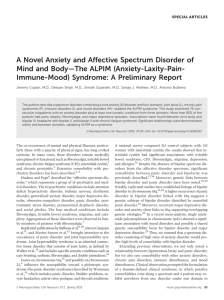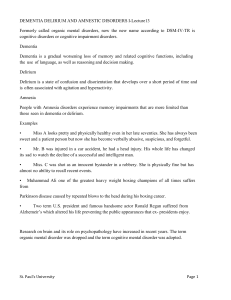Conduct Disorder
advertisement
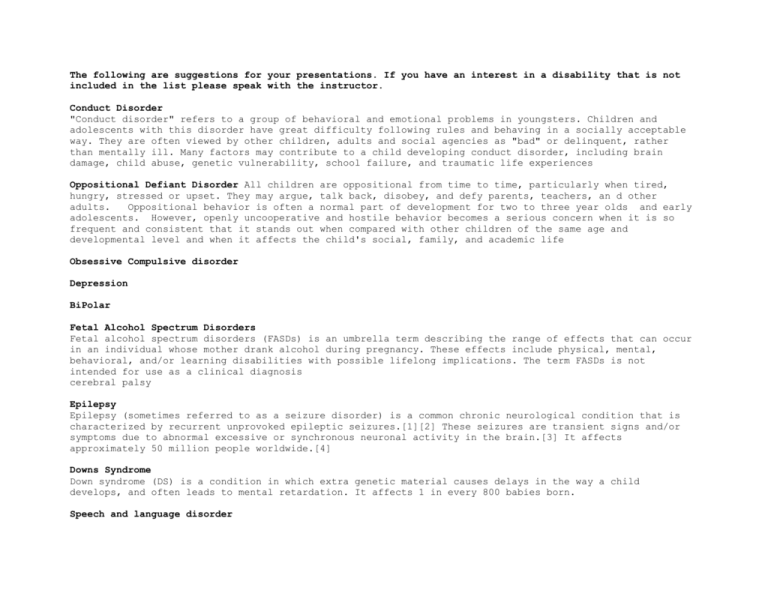
The following are suggestions for your presentations. If you have an interest in a disability that is not included in the list please speak with the instructor. Conduct Disorder "Conduct disorder" refers to a group of behavioral and emotional problems in youngsters. Children and adolescents with this disorder have great difficulty following rules and behaving in a socially acceptable way. They are often viewed by other children, adults and social agencies as "bad" or delinquent, rather than mentally ill. Many factors may contribute to a child developing conduct disorder, including brain damage, child abuse, genetic vulnerability, school failure, and traumatic life experiences Oppositional Defiant Disorder All children are oppositional from time to time, particularly when tired, hungry, stressed or upset. They may argue, talk back, disobey, and defy parents, teachers, an d other adults. Oppositional behavior is often a normal part of development for two to three year olds and early adolescents. However, openly uncooperative and hostile behavior becomes a serious concern when it is so frequent and consistent that it stands out when compared with other children of the same age and developmental level and when it affects the child's social, family, and academic life Obsessive Compulsive disorder Depression BiPolar Fetal Alcohol Spectrum Disorders Fetal alcohol spectrum disorders (FASDs) is an umbrella term describing the range of effects that can occur in an individual whose mother drank alcohol during pregnancy. These effects include physical, mental, behavioral, and/or learning disabilities with possible lifelong implications. The term FASDs is not intended for use as a clinical diagnosis cerebral palsy Epilepsy Epilepsy (sometimes referred to as a seizure disorder) is a common chronic neurological condition that is characterized by recurrent unprovoked epileptic seizures.[1][2] These seizures are transient signs and/or symptoms due to abnormal excessive or synchronous neuronal activity in the brain.[3] It affects approximately 50 million people worldwide.[4] Downs Syndrome Down syndrome (DS) is a condition in which extra genetic material causes delays in the way a child develops, and often leads to mental retardation. It affects 1 in every 800 babies born. Speech and language disorder Speech and language disorders refer to problems in communication and related areas such as oral motor function. These delays and disorders range from simple sound substitutions to the inability to understand or use language or use the oral-motor mechanism for functional speech and feeding. Some causes of speech and language disorders include hearing loss, neurological disorders, brain injury, mental retardation, drug abuse, physical impairments such as cleft lip or palate, and vocal abuse or misuse. Frequently, however, the cause is unknown. Hearing impairment Multiple Sclerosis (MS) A chronic, inflammatory disease that affects the central nervous system (CNS). MS can cause a variety of symptoms, including changes in sensation, visual problems, muscle weakness, depression, difficulties with coordination and speech, severe fatigue, short term memory loss, problems with balance, over heating and pain Tourettes Syndrome Tourette syndrome (TS) is a neurological disorder characterized by repetitive, stereotyped, involuntary movements and vocalizations called tics. Gifted and Talented Cerebral palsy Traumatic Brain Injury Vision impairment Fragile X Syndrome ADHD Mental Retardation (mild, moderate, severe, and profound) Other Health Impariments Your presentation should address the following: Limit your presentation to a maximum of 10 slides including the title slide. Make sure your name, date, and section appear on the title page. 2 points for each of the following: Prevalence, etiology (causes), manifestations, appearance Instructional Strategies / Supports Social supports Information you could share with children (one – two slides) Resources for teachers
